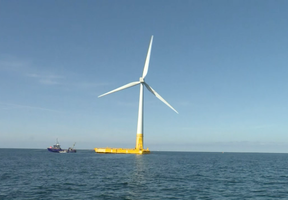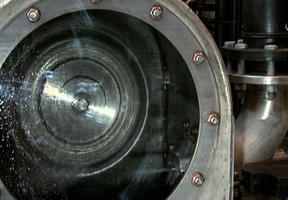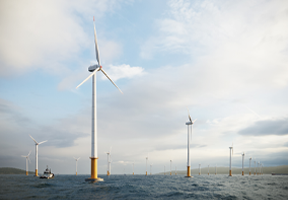Rare Metals: Increasingly Strategic
5 min read
The continued, fast-paced rise in renewable energies and digital technologies since the 1990s has seen number of metals, many of which occur only rarely in nature or are produced in small quantities. Securing the availability of these “rare metals” has become a critical challenge. A shortage could hamper the development of such strategic industries as consumer electronics, telecommunications, electric vehicles, processing and wind turbines.

© ED JONES / AFP - The photo shows workers in China handling waste from rare earth processing plants, near the city of Baotou in Inner Mongolia.
Also dependent on these rare metals are electric battery manufacturing, “permanent magnet” technology and many industrial processes, particularly in the refining and automotive industries. For this reason, rare metals are sometimes referred to as the “oil of the 21st century”.
Lithium in Electric Batteries
Demand for small batteries has soared due to the rising popularity of portable electronics such as cell phones and laptops, with 1.5 billion connected mobile devices sold worldwide in 2017. The electric vehicle (EV) market, while still relatively small, will require a stock of medium-sized batteries. And huge storage capacity will be needed for the development of intermittent renewable energies, such as wind and solar photovoltaic (PV) .
The technology currently dominating these markets is the lithium-ion1 battery, despite occasionally being criticized for its risk of overheating and subsequently bursting into flames. Researchers worldwide are busy trying to develop other types of batteries that do not use this “ionized” lithium, but the metal will continue to be vital for a long time to come, especially in small and medium-sized devices. The use of&n more than 50% by 2025 compared with 2014.
Lithium is primarily found in the beds of dry lakes and lagoons in desert areas. More than half of&nb world’s reserves are concentrated in three countries: Bolivia, Chile and Argentina. While there is no shortage at the moment, growing demand may increase the risk in the medium term despite intensive research into lithiumrecycling. In addition, lithium-ion batteries use cobalt and graphite (a form of carbon), two minerals that are also important for industry.
Rare Earths Powering Miniaturized Motors
Motors are found in a wide array of machinery. To run, they require magnetic elements, generally electromagnets comprising a ferrite core surrounded by a copper coil. However, some metals, known as “rare earths” (see box), can be used as “permanent” magnets, very small volumes of which can produce a very strong magnetic field. They are therefore used in applications that require miniaturization, ranging from ballistic missile guidance systems to high-end vacuum cleaners. Computer hard drives in particular can contain up to 4.5 grams of rare earths, a seemingly modest figure that becomes significant when considering the hundreds of millions of units manufactured at an industrial scale.
In the industry, wind turbines rely heavily on permanent magnets. Given how tall these turbines need to be to capture the strong winds at higher altitudes, they have to be lighter than conventional models. Permanent magnets are also much easier to maintain than coil systems, which is a non-negligible advantage out at sea. A giant 7‑megawatt wind turbine can contain up to 4 metric tons of magnets, requiring more than one metric ton of rare earths.
Catalysts in the Fuel Industry
Several rare earths have “catalytic” properties, meaning they increase the rate of a chemical reaction without disrupting it.
Cerium and lanthanum, for example, have emerged as key metals for refining processes and the catalytic converter technology used in the automotive industry. Catalytic converters control exhaust emissions from internal combustion engines and thereby reduce particulate emissions, making them essential for complying with environmental standards.
Rare earths are also harnessed for their electronic and luminescent properties, notably to manufacture screens and lights, and are used in the glass, ceramic and alloy industries.
Rare Metals and Rare Earths: Critical Raw Materials
Rare metals, unlike more common varieties such as copper, iron and zinc, are produced in small quantities of less than 100,000 metric tons per year, according to the criteria of the French Geological a such metals, including cobalt, tungsten, lithium, mercury, tantalum and niobium.
Within this group, there is a specific category of metals called “rare earths”, made up of all the lanthanides in the periodic table as well as yttrium and scandium. In total, there are 17 rare earths. The most widely used are cerium, lanthanum and neodymium.
are earths always occur with other minerals and are separated using two main techniques: (i)
, which harnesses the hydrophobic or hydrophilic reactions of mineral particles to water, and (ii) chemical processes using cyanide or mercury, for example. Flotation is generally not a source of pollution. Chemical processes can be hazardous if they are not performed to strict standards. When the market price of rare earths is not high enough to cover the cost of the separation techniques, many of these elements are abandoned in the mountainous “mine dumps” of waste rock that generally surround mines.
Access to rare earths has become a major geopolitical issue. They are now considered a “critical raw material”, meaning that they are essential for a country’s industry and risk falling short of demand, often because they are imported. The European Union (E.U.) regularly publishes a list of critical raw materials2, which includes non-metals such as rubber, phosphates and helium. In France, BRGM has been tasked with carrying out an annual study of metals that are potentially strategic for the French economy3.
Sources:
- Lithium is a metal that easily gives up an electron to become an ion, hence the term lithium-ion.
- E.U. list.
- BRGM monographs (in French only).





















